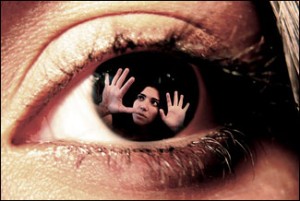Historically, child-rearing practices have been influenced by culture, religion, and societal expectations. The idea that “boys don’t cry” has been perpetuated through generations, reinforcing the notion that emotional expression, especially in the form of tears, is a sign of weakness. The idea of girls being too emotional would tend for parents to stop girls from crying by saying “cut the drama”. Children are highly impressionable, and the messages during their formative years can make or break their emotional development. When parents discourage crying or dismiss emotional expression, children tend to internalize the belief that feelings are invalid or unwelcome.
As children grow into adults, the habit of suppressing emotions, including tears, becomes deeply rooted in the psychological makeup. Many adults ingrain a fear of being judged or perceived as weak which prevents them from freely expressing their emotions.
Crying is a natural and complex emotional response and understanding the reasons behind why crying is good for pain involves examining both the psychological and physiological aspects of this emotional release:
- Stress Hormone Reduction: Tears, specifically emotional tears, may contain stress-related hormones. When these tears are shed, the physiological response suggests crying may act as a natural mechanism for the body to detoxify, resulting in a sense of relief.
- Endorphin Release: Endorphins are the body’s natural feel-good chemicals, which is triggered when crying occurs.
- Emotional Catharsis: Crying provides release valve for pent-up emotions. Emotional catharsis helps individuals process and navigate their emotions, preventing the accumulation of emotional stress.
- Social Support and Connection: Crying may elicit empathy and support from those around you. This sense of connection is vital for emotional well-being and gift overall alleviation of pain, emotional or physical.
- Communication of Distress: From an evolutionary perspective, crying represents a verbal signal of distress. In infants, crying is primary way of communication to express needs or discomfort. Although the communicative aspect of crying may evolve with age, it will remains to signal emotional or physical distress.
- Facilitation of Emotional Processing: Crying can aid the processing of complex emotions. It allows individuals confront and accept their feelings. The act of crying can facilitate a deep understanding of self and accepting that crying and feeling leads to growth and healing.
- Tension Release: Physical pain and emotional distress can be interconnected, leading to muscle tension and stress. Crying can be a physical release that helps release tension and relax the body.
Crying is the original therapy session you never knew you signed up for. It is your soul’s way of detoxing, shedding baggage like a glittery unicorn molting its woes. When tears flow, stress hormone take a hike – the endorphins are released and mood enhances. Sharing tears connects hearts, turning the puddle of emotions into a pool party of empathy. So, next time you tell you child to stop crying or as an adult you feel embarrassed of your tears, let them rain and allow emotions to be validated by high-fiving you well-bring leaving anyone lighter and emotionally minty fresh.
I hope you have a Skippy Peachy weekend.
Yours truly,
Monique
References:
Licsw, L. N. (2021, March 1). Is crying good for you? Harvard Health. https://www.health.harvard.edu/blog/is-crying-good-for-you-2021030122020
Sadick, B. (2021, November 3). Go ahead, have a good cry. AARP. https://www.aarp.org/health/healthy-living/info-2021/crying-health-benefits.html
What science says about letting your baby ‘cry it out.’ (2016, May 26). https://www.michiganmedicine.org/health-lab/what-science-says-about-letting-your-baby-cry-it-out

